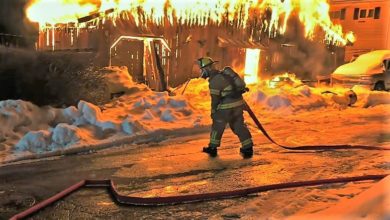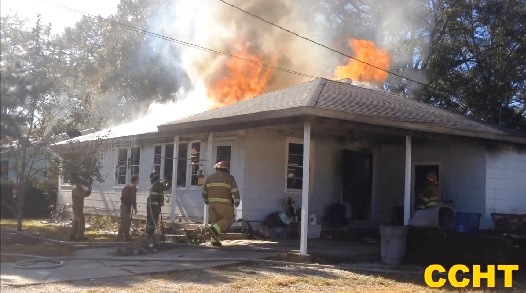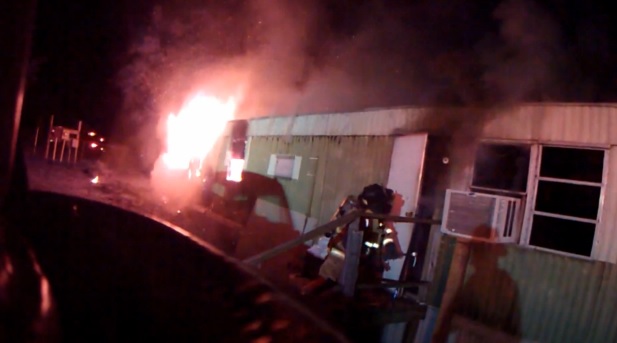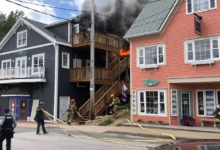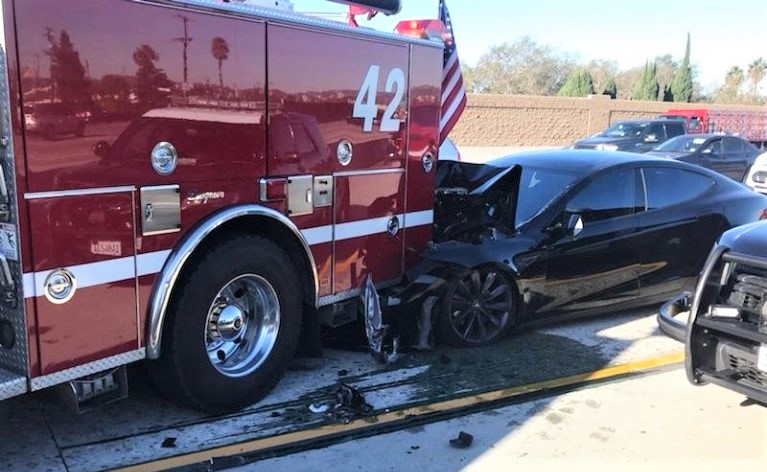The Fukushima 50: Firefighters, police, soldiers & nuclear plant technicians face increasing radiation exposure as they try to prevent catastrophe.
More from Mike Ward in Firegeezer
Earlier coverage from Japan, including U.S. search teams in action
A small crew of technicians, braving radiation and fire, have become the only people remaining at the Fukushima No.1 nuclear power station – and perhaps Japan’s last chance of preventing a broader nuclear catastrophe.
Dubbed by some as modern-day samurai, the technicians were back at work late yesterday after a surge of radiation forced them to leave their posts for hours.
The workers are being asked to make escalating sacrifices that so far are being only implicitly acknowledged: Japan’s Health Ministry said it was raising the legal limit on the amount of radiation to which each could be exposed, to 250 millisieverts from 100 millisieverts, five times the maximum exposure permitted for nuclear plant workers in the United States.
Tokyo Electric has refused to release the names or any other information about the workers who stayed behind, nor have utility executives said anything about how the 50 are being relieved as they become tired or ill.
The site is now so contaminated with radiation, experts say, that it has become difficult for employees to work near the reactors for extended periods of time. According to one expert’s account of nuclear emergency procedures, workers would be cycled in and out of the worst-hit parts of the plant.
Some of those battling flames and spraying water at reactors at No.1 plant are members of Japan’s Self Defence Force, police officers or firefighters.
Mr. Jaczko (pronounced YAZZ-koe) said radiation levels might make it impossible to continue what he called the “backup backup” cooling functions that have so far helped check the fuel melting inside the reactors. Those efforts consist of using fire hoses to dump water on overheated fuel and then letting the radioactive steam vent into the atmosphere.
Those emergency measures, carried out by a small squad of workers and fire-fighters, represent Japan’s central effort to forestall a full-blown fuel meltdown that would lead to much higher releases of radioactive material into the air.
Mr. Jaczko’s testimony, the most extended comments by a senior American official on Japan’s nuclear disaster, described what amounts to an agonizing choice for Japanese authorities: keep sending workers into an increasingly contaminated area in a last-ditch effort to cover nuclear fuel with water, or do more to protect the workers but risk letting the pools of water boil away — and thus risk a broader meltdown.
From Andrew Gilligan, The Telegraph:
In a country already brimming with stoic courage, this skeleton crew is surely the bravest of the lot. From fragments of information, we can build a picture of their desperate struggle to save their countrymen, and themselves.
“It doesn’t look good at all,” says Matt Tuck, a 22-year veteran of the British nuclear industry who is now business director of Matom, a consultancy specialising in nuclear plant operation and emergency management. “Fifty is a very small number, given that there are six reactors. They are at pretty serious risk.”
They are not just technicians, but also soldiers and firefighters. They are middle-class control room and health personnel and working-class technicians. There are fifty or so at any one time, but the total, with shifts and rotations, may be as many as 180. The odds against them are great, and growing.

